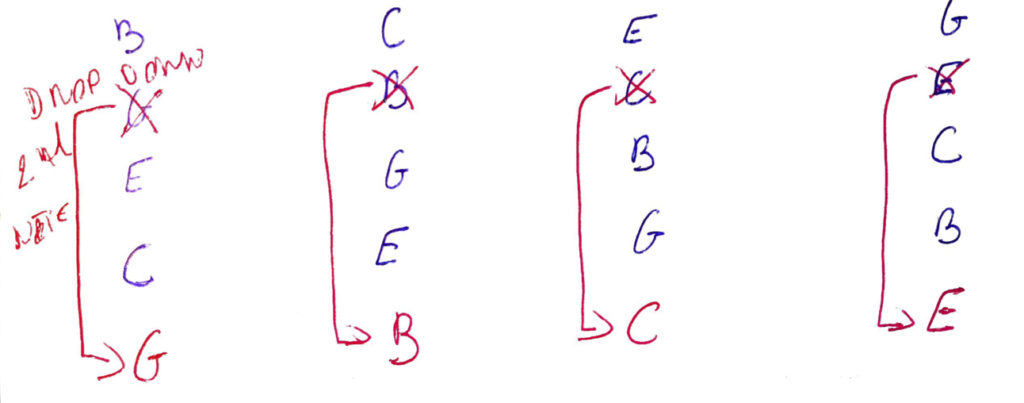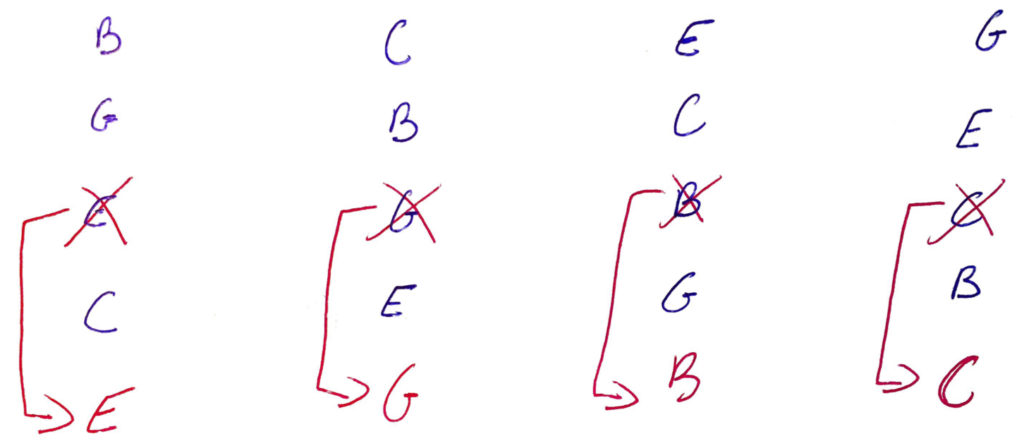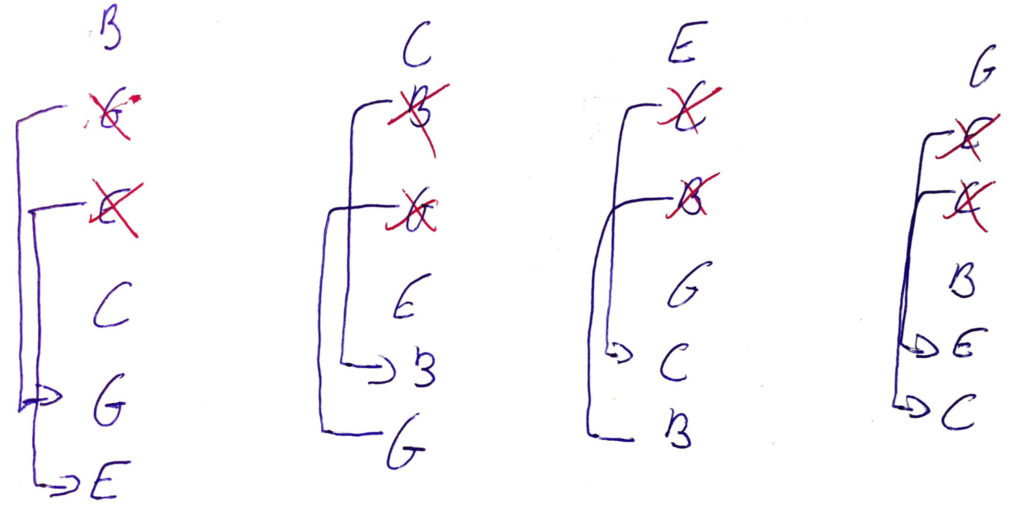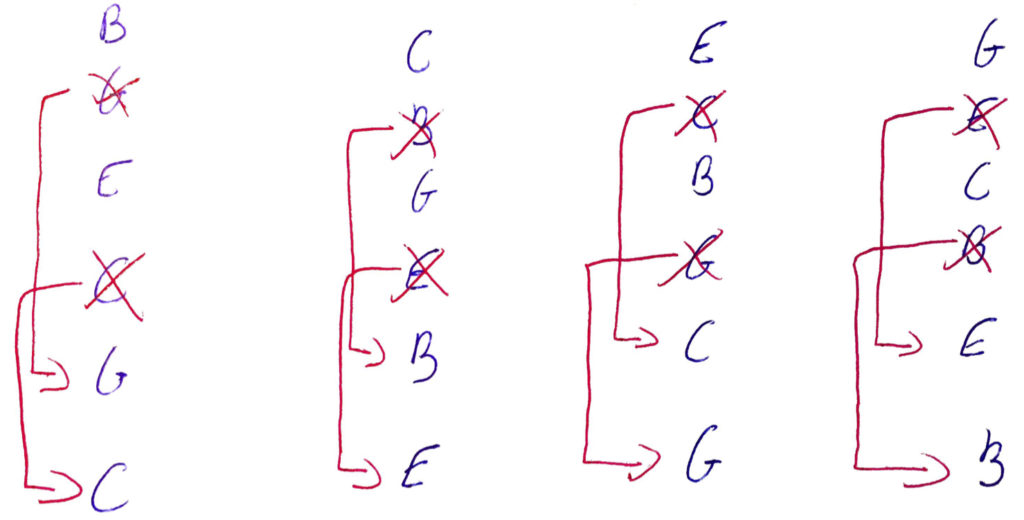Drop Voicings
Last week we covered closed voicings
The Theory of Closed 7th Chord Voicings
Drop voicings are “open voicings”, also called “spread voicings” (depending on which music theory book you are reading)
The difference between closed and open voicings:
Closed voicings: you stack 3rd intervals, the distance between the lowest and the highest note in the chord is less than an octave.
Open Voicings: the distance from the lowest to the highest note in the chord is more than an octave. The chord tones don’t go in order, leaving gaps.
For example: C G B E
In that voicing: the E note between C and G is skipped and appears up an octave higher, and the C note between B and E is skipped and appears an octave lower.
The distance from C to highest note E is a 10th interval, which is larger than an octave.
All the different ways you can re-organize the root, 3rd, 5th, and 7th in a chord, lead to different open chord voicings for any given chord.
These different orders in which you can rearrange the 4 chord tones in 7th chords are organized into what we call “drop voicings”
These voicing types (drop 2, Drop 3, drop 2 & 4, …) are what you get when you drop the 2nd (drop 2), the 3rd (drop 3) et. note from the top down an octave, (always) starting from a closed position voicing.
You basically drop the note counting down from the highest note, down an octave.
This creates a wider, hence “open/spread” voicing.
If this is all a bit confusing, the following examples are going to clear up any possible confusion.
Drop 2 Voicings
You get drop 2 voicings when you drop (or “move”) the 2nd note from the top in a closed voicing, down an octave.
In other words: the 2nd note from the top is not the top/highest note, but the note right below the top highest note.
When in a closed voicing, you move that (2nd highest) note an octave lower, you get a new configuring of the 4 chord tones. That new configuration is called a “drop 2 voicing”.
This is clear in the following picture.

Notice how:
- Dropping the 2nd note from the top in a root position closed voicing, down an octave
becomes a 5th in bass drop 2 voicing - Dropping the 2nd note from the top in a 1st inversion closed voicing, down an octave
becomes a 7th in bass drop 2 voicing - Dropping the 2nd note from the top in a 2nd inversion closed voicing, down an octave
becomes a root position drop 2 voicing - Dropping the 2nd note from the top in a 3rd inversion closed voicing, down an octave
becomes a 3rd in bass drop 2 voicing
Drop 3 Voicings
When you drop the 3rd note (voice) from the top in a closed voicing, down an octave, you get a drop 3 voicing.

Drop 2/3 Voicings
When you drop the 2nd and 3rd note (voice) from the top in a closed voicing, down an octave, you get a drop 2/3 voicing.

Drop 2/4 Voicings
When you drop the 2nd and 4th note (voice) from the top in a closed voicing, down an octave, you get a drop 2/4 voicing.

I cover all these different voicings in guitar lessons at my teaching studio.
It’s a ton of fun and it gives a tremendous sense of freedom when you can play any given chord so many different ways all across the guitar neck.
Conclusion
Hit me up anytime at vreny@zotzinmusic.com if you have any questions, or if you would like to book a lesson.
These free lessons are cool, but you will never experience the progress, joy, and results that my students experience in lessons when you’re learning by yourself from blogs and videos.
That is why people take lessons: way better results and progress, much more complete information, exposed to way more creative ideas than you can get from a blog or YouTube video.
There is only so much that self-study can accomplish.
If you want to see amazing results and progress in your guitar playing, buy your first lesson here and get started ASAP.
You’ll impress your friends and loved ones in no time with your guitar playing!
Consider donating any small amount to help me keep this blog going.
Thank you for your support!


